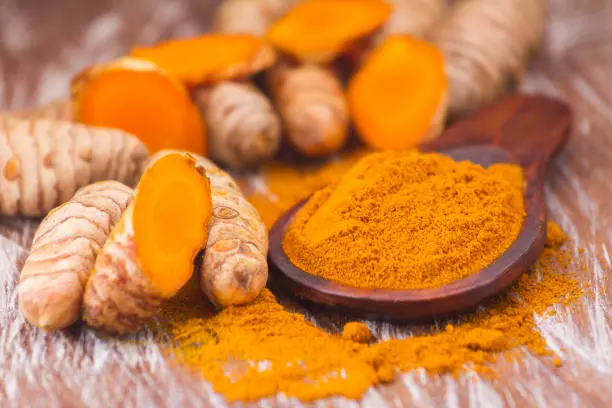
Why India needs to investigate turmeric adulteration, lead poisoning
ICMR researchers report 'very high pooled estimates of blood lead levels' in Indian children, igniting the need for remedial action

Turmeric rhizome dusted with lead chromate to enhance the spice’s yellow colour may explain why South Asia has the highest rates of lead poisoning in the world, The Economist, a London-based weekly, said in a November article. This has caused anxiety among a section of consumers exposed to such reports.
The article suggested that India could learn from Bangladesh, which launched a nationwide campaign in 2019 against turmeric adulteration with the chemical compound. Rules were strictly enforced, traders suspected of selling adulterated turmeric were exposed through secret video sting operations and heavily fined, a massive awareness drive was carried out and even Prime Minister Sheikh Hasina came on television to call out the practice. As a result, the report said, the country eliminated turmeric adulteration in its spice markets within two years and lead levels in the blood of turmeric mill workers fell by a third.
The initiative was triggered by a 2019 study carried out by teams from Stanford University and Bangladesh’s International Centre for Diarrhoeal Disease Research (ICDDR). The study, according to the university, involved a range of analyses, including interviews with farmers and spice processors in several Bangladesh districts which together produce nearly half of the country’s turmeric.
Lead chromate adulteration, it said, began in the 1980s when a devastating flood damaged the turmeric crop and left the rhizomes dull in colour. To prettify them for consumers with a preference for bright yellow curries, lead chromate, an industrial pigment used to colour toys and furniture was added. The catch: lead chromate is a neurotoxin. Lead increases the risk of brain and heart diseases in adults and retards brain development in children. About 90 per cent of the children with elevated blood lead levels live in low-income countries. There is no safe limit for lead; it’s a neurotoxin in its totality, the study’s lead author said.
Sources of lead exposure
Unleaded petrol, lead-based paints, lead-acid batteries and cosmetics like surma and sindoor are among the known sources of lead exposure. Lead comes in various ratios or isotopes depending on the source. This helped the Stanford University-ICDDR team to trace blood lead levels in Bangladeshis to lead chromate adulteration in turmeric.
The researchers said they did not find direct evidence of lead chromate adulterated turmeric beyond Bangladesh. They suspected that exporters may be extra careful while exporting to countries with rigorous food safety testing, so their consignments were not rejected. Yet, between 2011 and 2019, 15 brands of turmeric meant for sale in countries including the US were recalled because of high levels of lead, they said.
India’s food safety standards require turmeric to test negative for lead chromate. The Food Safety and Standards Authority of India (FSSAI) says it did a “desktop survey” of data obtained from different FSSAI-notified food testing laboratories across the country from January 2019 to December 2021. It received data from tests on 1,69,319 samples for heavy metals from 57 notified labs. Of these, 1,389 (0.82 per cent) were found to have heavy metal content above the maximum permitted limit. Major non-compliance was observed for lead (37.7 per cent) followed by arsenic and cadmium. The source of lead contamination was not stated. Bottled water samples had the highest rate of heavy metal non-compliance followed by turmeric.
Need for remedial action
The Federal sought responses via email from the food safety commissioners of Karnataka, Tamil Nadu and Kerala and also followed up with telephone calls. However, only the Food Safety Commissioner of Kerala, Afsana Perween, responded. She said she was new to the job and assigned Deputy Director Manju Devi to reply.
Devi said she had not come across lead chromate adulteration in turmeric in Kerala “in her entire career of 30 years.” She is in the analytical wing of the food safety department. She said the department does random checks as well as checks based on complaints. In the 16 monthly test reports posted on the department’s website since January 2022, there were 197 unsafe samples. Of these, four were of turmeric. They were found to be contaminated with tin, cadmium and copper. No lead was detected.
In April, researchers from the Indian Council of Medical Research (ICMR) published a meta-study or a study of published studies. They retrieved about 6,850 online studies and after eliminating duplicates and so on, considered 141 for full-text review and settled on 45 for quantitative data “synthesis”. They reported “very high pooled estimates of blood lead levels for Indian children (aged 14 years and below), igniting the need for remedial action by national stakeholders”.
There was a trend of gradual reduction during the last three decades. This is because unleaded petrol was phased out in 1996 and banned in 2000. In 2016, the manufacture and sale of household and decorative paints with lead content of more than 90 parts per million were banned. But, the study said high-risk children did not exhibit the gradually declining trend of blood lead levels. Among the sources of lead exposure, it did not name lead chromate. However, an investigation is necessary to determine the extent of lead poisoning in India and its likely source.

